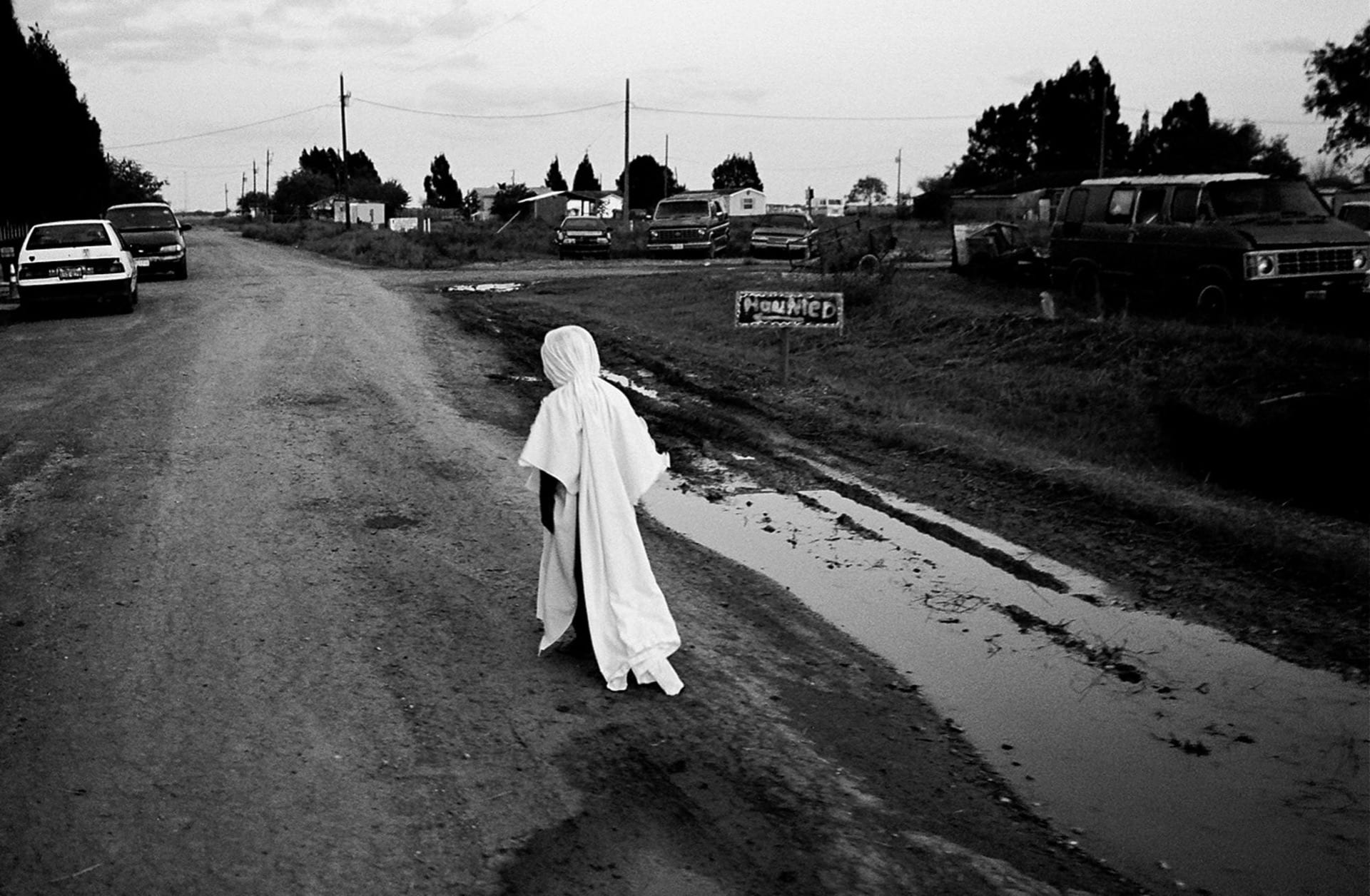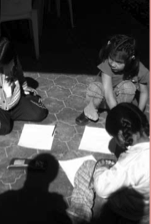Ending Violence Against Children
Challenging Authoritarianism
Violence against children is not a new subject for the international community. Since the enactment of the first human rights treaties, concerns for the protection of children from violence were part of the international debate. As human beings, children are entitled to enjoy all the rights guaranteed by the various international human rights treaties that have developed from the Universal Declaration of Human Rights. For the last decade, the entry into force of the Convention on the Rights of the Child and its massive ratification permitted the development of a more articulated and detailed body of knowledge and jurisprudence on this topic. The jurisprudence generated by the Committee on the Rights of the Child through the analysis of country reports and general comments will call for a number of changes in laws and policies to ensure the protection of children from all forms of physical and psychological violence. Traditional harmful practices such as child labor, commercial sexual exploitation and corporal punishment are among various violations addressed by the Committee.
In 1996, Graça Machel drew global attention to the impact of armed conflict on children while presenting a global study to the UN. The report revealed the extent of children’s involvement in the 30 or so armed conflicts raging around the world and the impact of violence inflicted against them in these situations. Its publication was followed by various initiatives by the international community to stop the involvement of children in conflict situations and strengthen surveillance on the situation of children in these contexts. Simultaneously, two global gatherings to address the commercial sexual exploitation of children were promoted in Stockholm (1996) and Yokohama (2001), calling the world’s attention to the plight of children in the world sex trade and devising methods to protect children from sexual exploitation. Eventually, both topics were also the reason for the enactment of two optional protocols to the Convention, strengthening the movement toward the protection of children from these forms of violence.
In 2001, on the recommendation of the Committee on the Rights of the Child, the General Assembly requested the preparation of an in-depth study on the question of violence against children, containing member states’ recommendations for appropriate action. Three years later, in October 2006, the study report was presented to the General Assembly, resulting in the publication of the World Report on Violence against Children (see www.violencestudy.org; United Nations General Assembly, Report of the Independent Expert for the United Nations study on violence against children, 2007).
CHALLENGES IN DEVELOPING A GLOBAL STUDY
Framed by the Convention on the Rights of the Child, the study report had to cover an enormous field: the causes and impact of all forms of violence against children of all ages. This means addressing radically different contexts and actors: from violence against babies at home to bullying in schools and police violence against street adolescents. Additionally, as a global report done by the UN, it had to address the situation of all countries, independently of their different socioeconomic status. Given the scope of the study, the challenge was combining the existing knowledge and experience to determine a basic framework for action that could orient the international community while addressing all forms of violence against children.
Another central aspect was its multi-disciplinary approach. The 2002 World Health Organization report was one of the inspirations for the World Report on Violence against Children. The study departs from a solid child rights frame but makes a strong effort to incorporate the approaches of people working in public health, child protection and social welfare, education and criminal justice, among other areas.
Beyond painting a picture on the problem of violence, the final report needed to provide recommendations for action. As in other UN reports, the impact and causes of violence needed to be described simultaneously, an effort that was seriously hampered by extremely limited knowledge and data in most of the countries; moreover, the study had to provide guidelines for member states despite limited knowledge and data.
The participatory process helped overcome these various challenges in the short period of three years and to prepare an action-oriented report. The promotion of regional and national consultations in all regions, a number of expert meetings, the preparation of a questionnaire to governments and the collection of submissions by non-governmental organizations and research institutions, were all very relevant. The global presence of UN system organizations, in particular UNICEF, was vital in this sense. The networks of child rights organizations were also important in mobilizing civil society and academics.
The meaningful inclusion of child and adolescent participants at all stages helpedmaintain lively debates and ensure that concrete concerns were not neglected because of the constant need to find common ground and understanding. Various civil society organizations developed methodology to ensure child participation.
VIOLENCE AGAINST CHILDREN IN LATIN AMERICA
The Latin American region was actively involved throughout the study process. Concerns about violence are very present in the regional agenda because of the impact of criminal groups and urban violence there. The World Health Organization’s 2002 World Report on Violence and Health revealed that while the world average level of homicides per 100,000 inhabitants (1995-99) was 8.8, in Latin America this average was 25, with youngsters by far the most common victims. At the same time, civil society has a strong presence there and accumulated some important experiences in the last decade by expanding its responsibilities both in terms of monitoring and implementing strategies to stop violence.
The study thus confirms that Latin American children suffer various forms of violence in their homes, schools, institutions of care, communities or even in places of work. Following global trends, infants and young children are very vulnerable to violence in the home. Teenagers and youngsters, particularly boys, are the most frequent victims of homicides. Sexual violence marks the lives of many girls. Children living behind bars are submitted to dreadful treatment far from the eyes of the public.
Throughout our consultations in the region, attention was more frequently directed to youth violence activities and the repressive responses offered by many governments. The “tough-hand” rhetoric encountered eloquent political sponsors in Latin America and had a strong impact on the discussions on child rights and public policies in related areas. Advocates for these strategies blame youngsters for the explosion of violence and reject the adoption of international standards in the treatment of children in conflict with the law because their subsequent sense of impunity would fuel violent behavior.
The study’s findings not only put in serious doubt the identification of children as the common protagonists of violent crimes, but also indicate negative consequences of some repressive policies adopted. The consultants recommended establishing a broader set of initiatives to curb crime, including prioritizing preventive efforts, promoting accountability and strengthening research.
Concerns about other forms of violence were not neglected in the regional discussions. The prevalence of violence in the homes and the disseminated use of corporal punishment were topics for important discussions as this issue is still very infrequently addressed by human rights organizations, which tend to focus more on violent treatment perpetrated by state actors. The deteriorated situation of schools in communities affected by violence and the challenges in making schools safe spaces for children were also frequently mentioned. The vulnerability of child workers, in particular child domestic workers was another frequent topic in the regional debate. The study has also called attention to other extremely vulnerable groups such as mentally disabled children and indigenous children.
THE OVERARCHING RECOMMENDATIONS
The study report to the General Assembly provides a set of 12 overarching recommendations with specific recommendations for tackling violence taking place in five settings: home, school, juvenile and justice system institutions, workplace and the overall community. Perhaps the main contribution of these recommendations is that they provide a structured frame to orient efforts by different sectors while preventing and responding to violence in all regions.
Violence cannot be legal. The Committee on the Rights of the Child repeatedly stated that no form of physical chastisement is acceptable under the international law. If we want to protect children we must have clear and objective laws prohibiting the use of corporal punishment in all situations, including inside the home. Traditional practices that are harmful to the child, such as genital mutilation or early and forced marriages must be declared equally illegal. Legal instruments in many countries are unclear and insufficient, hence the study urged countries to revise and improve their legislation prohibiting all forms of violence. Of course, laws are not magic instruments to change the reality, but they are pedagogical tools that provide the best frame for action.
Violence can and must be prevented. Years of research and collaboration between professionals of public health, security and justice indicate that if governments address root causes and risk factors that may give rise to violence, reality can be changed. Easy access to small arms, the lack of safe public spaces, and the lack of child-parent attachment are all recognized as risk factors. The study calls for a shift from reaction to prevention. Governments and other international institutions must concentrate their efforts and resources in long-term measures that change once and for all the contexts where violence thrives.
When violence occurs, the response must be quick and sensitive to children’s needs. An efficient system to assist victims and stop perpetrators is central to changing the state of fear and isolation of many victims. Early detection mechanisms are very important to reduce the devastating damage violence can cause a child. Children also need safe and accessible channels to report violence. The justice system and the police must work very carefully not to exacerbate the pain and suffering of child victims. These institutions must be trusted to have a positive impact: distant and feared police or justice systems—as it is so frequently the case in Latin America—can do little to break cycles of violence. Equally, perpetrators must be held accountable for the violations they commit.
Violence cannot be stopped unless we improve our understanding of this problem. The study calls for urgent improvements in terms of data collection and research worldwide. It is unacceptable that after so much research advancement in the entire world not even half of the world population is covered by adequate death registration and cause-of-death classification. The lack of data on children living in state-controlled institutions is also inexcusable. To shape efficient policies governments must be much better informed. To promote accountability state institutions must be systematically open to public scrutiny.
AFTER THE STUDY
The process of the study’s preparation was by itself an important instrument to raise global awareness on the impact of violence against children in all regions and to promote initiatives, strengthening and generating related networks of organizations. The involvement of stakeholders in government and civil society in these activities helped to give them visibility and legitimacy, permitting different entities to move ahead in the implementation of policies and programs in their respective countries.
At the national level, the main contribution of the study’s release is probably the provision of a frame to address violence by different sectors of government and society. If the study succeeds in spreading the basic notions that actions to stop violence must equally consider prevention and response and that efficiency can only be attained with accurate data and accountability, it will certainly lead to significant progress in an area still marked by limited data, inefficient repressive measures and fragmentation.
The study’s broad scope and generic recommendations pose the risk that member states and the international community will simply contend that policies are already in place to address most of the proposed recommendations. Thus, the challenges ahead are to discuss how what’s already in place must be changed or enhanced in accordance with the study’s framework. This evaluation must occur at local and regional level, of course. But at a global level, there is also a critical need to reassess the quality and quantity of initiatives taken to confront all forms of violence and the priorities picked by donors. The report on the first year after the study identified a number of efforts and studies dealing with issues such as trafficking of human beings, commercial sexual exploitation and some forms of child labor. Little evidence was provided with regard to progress in addressing violence in the home and family, in care and justice institutions, and regarding violence perpetrated by state agents and gangs, despite the recognized prevalence of these violations. Attention to some of these usually neglected areas must be increased, without affecting the limited initiative already in place.
Moving the UN machinery and international community beyond usual areas of concern will require advocacy at all levels, especially at high levels. Despite the need for a multi-sectoral approach to violence and the urgent need for more and better research, it is essential not to lose sight that the protection of children is grounded and should be always framed by the protection and promotion of human rights. The protection from violence is associated with the protection and promotion of all rights, including social and economic rights. Human rights bodies and instruments can play a very useful role catalyzing debate and pushing states to strengthen measures to fulfill their obligations to protect the rights of their citizens. The study thus didn’t propose any new international treaty as the protection of children from all violence was already clearly recognized by the existing treaties.
In Latin America, the presence of a regional human rights protection system can be a useful tool for follow up. The system can be utilized to raise awareness on systematic violations and to mobilize state responses. Regional leadership must realize that public security cannot be promoted when there is continuous violation of human rights. Information on the prevalence of different forms of violence present in the region, in particular violence perpetrated by state actors, is very important to enhance the public debate so frequently dominated by an emotional rhetoric.
The almost universal ratification of the Convention on the Rights of the Child, currently completing its 18th anniversary, indicates how much member states are keen to state their commitment to protect children. The persistence of various forms of violence against children, many even condoned by national law, indicates how much more needs to be done to translate into reality the obligations assumed by governments.
Recognizing that violence against children can be perpetrated by authority figures in the private sphere (parents) and public sphere (state actors) poses particular challenges avoided by many leaders even in more consolidated democracies. Countries both in the North and South must be stimulated and supported to seriously address these issues. And such a process involves not only adapting legal frameworks and policies but also promoting attitude change. Even if the impact and forms of violence vary among regions, the difficulties in challenging these authority figures persist in all societies.
Hannah Arendt once said that if the workers were emancipated in the 19th century and women achieved liberation in the 20th century, children were still waiting for their emancipation. The Convention should represent the turning point in the recognition of children’s full citizenship. Properly protecting children from violence must include fully hearing children and respecting their rights as full citizens and not as beloved proprieties of parents, schools or institutions.
Children’s dependence on adults makes them more vulnerable to violence. Unquestioned authoritarianism in the relations between adults and children makes violence against children a permanent threat. It is about time to change this reality.
Paulo Sérgio Pinheiro is the Cogut Visiting Professor, Center for Latin American Studies, CLAS, Brown and the Independent Expert responsible for the UN Study on violence against children. He thanks the Brazilian National Council for Scientific and Technological Development, CNPq and the Sao Paulo Foundation for the Support for Research, FAPESP.
Marcelo Daher assisted the preparation of the UN Study on violence against children and is currently working as a project officer at UNICEF Headquarters/Geneva.
Related Articles
Salvadoran Youth, Transnationalism’s Other Product
English + Español
A completely distraught junior high school teacher in the Washington DC area approached her assistant principal—a highly-educated white middle-class man—one morning for urgent…
Cuba on the Edge: Short Stories from the Island
If you want to read contemporary Cuban fiction and do not have access to the Spanish original, an increasing number of excellent translations will now allow you to become acquainted with…
Making A Difference: Literacy in Calca
Seated on the floor of their school house twenty attentive first grade eyes watch as Martha turns the pages and asks aloud about the fate of David a friendly llama…





